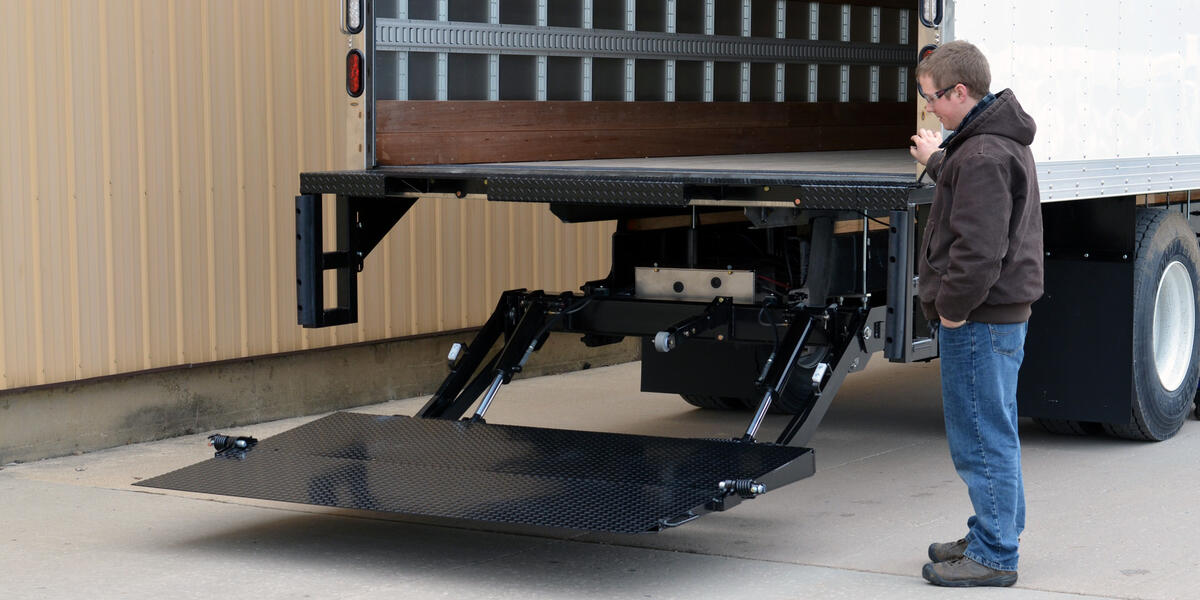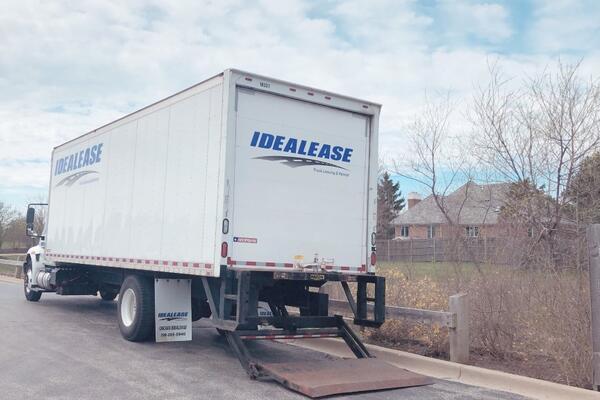When we are training our drivers regarding safety, one area that is often overlooked is the safe operation of the liftgate. Like any other piece of powered, automated equipment, drivers must learn to safely operate liftgates. There are numerous types of liftgates, and each may have its own unique hazards. Liftgates are potentially hazardous and should only be used by employees who have been trained or familiarized to operate them safely. Common injuries include amputated fingers and toes; crushed feet; a runaway load that falls over or off the liftgate onto an employee trying to steady it either next to or below the load. It is always important to read the specific manual for your make and model, however, here are some Best Practices safety tips for liftgate operation.
LIFTGATE SAFETY: DOs and DON'Ts
DO:
Make sure all drivers or operators of the liftgate are properly trained before being allowed to operate the liftgate.
Be certain vehicle is properly and securely braked before using the lift gate.
Choose a level surface area whenever possible to operate the gate.
Consider the safety and location of bystanders and location of nearby objects when operating the liftgate. Stand to one side of platform while operating the liftgate.
Make sure the platform surface is clear of ice, snow, and is kept slip resistant.
Keep hands and feet clear of all pinch points. There is a shear or pinch point exposure during lift-gate operations. Take note of where the lift-gate and the truck bed meet. Feet and hands are particularly vulnerable, during raising and lowering of the lift-gate.
Use chocks to prevent loads from rolling off the gate.
Secure top-heavy loads with strapping to prevent the item from tipping or rolling off.
Correctly stow platform when not in use. Extended platforms could create a hazard for people and vehicles passing by.
Make certain platform is properly latched when in transit.
Operate the lift gate with the control switches only.
Read and follow WARNING DECALS, OPERATION DECALS and OWNER’S MANUAL.
Visually inspect the lift gate daily as part of your pre-trip inspection.
Write up any defects to the liftgate on your daily vehicle inspection report and report to Idealease maintenance personnel immediately.
Tell Idealease maintenance personnel when adjustment to the liftgate is needed.
Keep all decals in place and legible and retain the Owner’s Manual in the Vehicle.
Allow the lift gate to be used by persons not familiar with its operation.
Use the lift-gate for any purpose other than to lift or lower cargo from the truck. Never use lift-gates as a personnel lift.
Use the lift gate if unit shows signs of abuse or fails to operate freely.
Permit the motor to run after the lift gate is raised to bed level.
Overload the lift gate. (Refer to the capacity chart for proper capacity of lift gate.)
Allow any part of your body to be placed under, within, or around any portion of the moving liftgate or its mechanisms, or in a position that would trap them between the platform and the floor of truck body (or between platform and the ground) when liftgate is operating.
Drive a forklift on the liftgate platform.
Drive with the lift-gate down. It must be folded up and secured before the truck moves.
Maxon www.maxonlift.com
Anthony www.anthonyliftgates.com
Waltco www.hiab.com/en-us/products/liftgates
Palfinger www.palfinger.com/en-us/products/liftgates
First Year of DOT Clearinghouse Annual Query Deadline is Approaching Soon!
The first annual DOT Clearinghouse deadline is only a few weeks away, with annual queries for all DOT-regulated CDL drivers due by January 5, 2021. If you have not yet run a query on each CDL driver you employ, (including yourself if you are an owner operator) you must do so by this date.
Failure to run these annual queries could lead to fines of up to $2,500 per driver.
The latest FMCSA Clearinghouse data suggests that there are still many employers and drivers who haven’t yet registered for the Clearinghouse, which could create a demand similar to the one we saw earlier this year when the system became overwhelmed by the large volume of traffic trying to register and login to the site. If this occurs in the weeks leading up to the deadline, as projected, it could make it difficult for employers to meet their requirements before the deadline.
Our suggestion? Take care of this requirement now before the surge occurs.
About the Annual Clearinghouse Query
Starting this year, employers must run at least one Clearinghouse query on each of their CDL drivers annually, with the first query due by the first anniversary date of the Clearinghouse. You have the option of running either a full or a limited query, but if a limited query shows that there is information on a driver’s record, you will be required to run a full query within 24 hours. Failure to do so will result in the driver being pulled from safety-sensitive functions until you are able to run the full query.
Here are the differences in the queries:
A limited query is performed annually on existing drivers. The limited query simply alerts a motor carrier whether the driver has information in the database. Drivers sign a general consent of the motor carrier's making that is outside of the clearinghouse. Motor carriers may ask drivers to sign a consent that will work for more than one year, provided the release has an end date.
If a current driver has data in the clearinghouse, the employer must request a full query, which includes detailed information on the violation and any completed steps in the return-to-duty process. Motor carriers must also perform a full query as a part of the preemployment process on new hires.
Due to the sensitive nature of the full query, the driver must have a portal account to electronically provide authorization. As a result, all applicants need a portal account, while existing drivers would only need one if a full query is necessary.
If a driver refuses to give permission to access his or her clearinghouse record (limited or full query), he or she cannot perform a safety-sensitive function such as driving.
For additional information on the FMCSA Drug and Alcohol Clearinghouse go to Drug & Alcohol Clearinghouse - Home (dot.gov)









